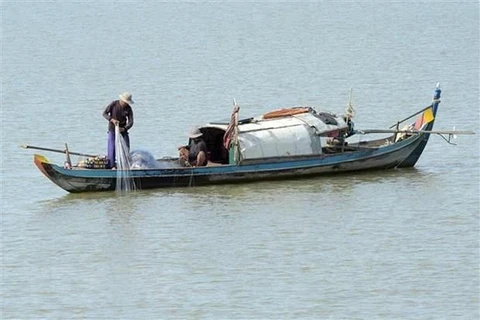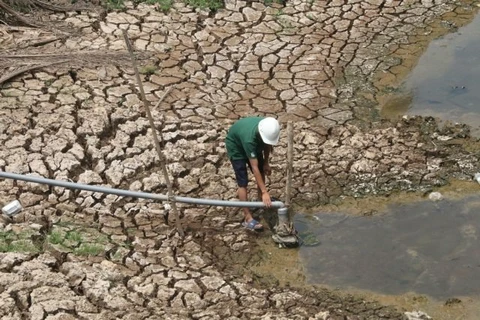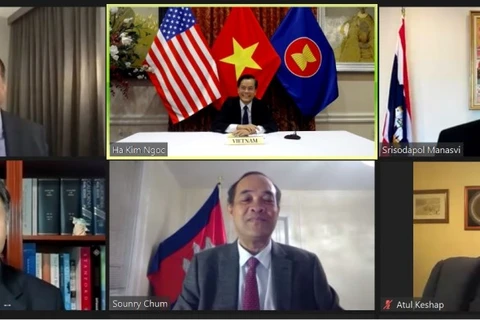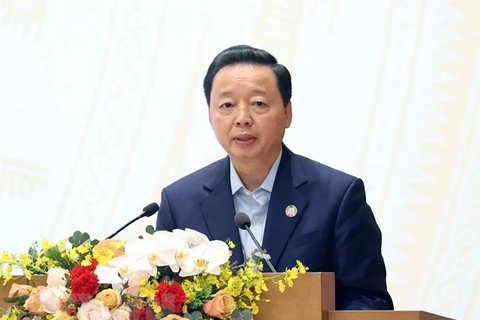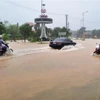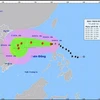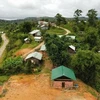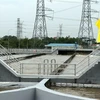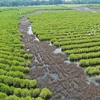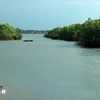Hanoi (VNA) - In the face of growing pressure on water resources in recent years, authorities in Vietnam, including the Ministry of Natural Resources and Environment (MoNRE), have been striving to ensure the equitable and sustainable management of rivers nationwide.
At the First International Meeting of People Affected by Dams, in Curitiba city, Brazil, in March 1997, representatives from 20 countries agreed that the International Day of Action for Rivers would fall on March 14 - Brazil’s Day of Action against Large Dams.
The aim of the day is to raise voices in union against destructive water development projects, reclaim the health of rivers and watersheds, and demand the equitable and sustainable management of waterways.
Vietnam is home to 108 river basins and about 3,450 rivers and streams that are 10 km or more in length. The average amount of surface water stands at about 830 - 840 billion cubic metres, 63 percent of which hails from other countries while only 310 - 320 billion cubic metres is generated in Vietnam.
Economic development and rapid urbanisation over recent years have led to an increase in wastewater discharged from industrial and agricultural activities. Improperly treated wastewater has also put growing pressure on both the quantity and quality of water resources, including rivers and streams.
Many major rivers have been suffering from different levels of pollution, which gets worse in the dry season when water flows naturally fall.
Facing this fact, river basin committees in Vietnam have conducted annual assessments of rivers and discussed solutions to protect the environment. Coordination among localities in river basins remains modest, however.
To ensure water resources security, the MoNRE has built and overhauled rules guiding the enforcement of the Law on Water Resources and the Law on Environmental Protection.
It has also conducted water resources planning and set up river basin organisations with a view to effectively coordinating and monitoring activities related to water resources.
Inter-reservoir operating procedures for certain river basins, proposed by the ministry, were issued by the Prime Minister, providing an important legal basis for regulating the water resources of major reservoirs to ensure interests between power generation, water supply for agriculture, and household use in downstream areas./.
At the First International Meeting of People Affected by Dams, in Curitiba city, Brazil, in March 1997, representatives from 20 countries agreed that the International Day of Action for Rivers would fall on March 14 - Brazil’s Day of Action against Large Dams.
The aim of the day is to raise voices in union against destructive water development projects, reclaim the health of rivers and watersheds, and demand the equitable and sustainable management of waterways.
Vietnam is home to 108 river basins and about 3,450 rivers and streams that are 10 km or more in length. The average amount of surface water stands at about 830 - 840 billion cubic metres, 63 percent of which hails from other countries while only 310 - 320 billion cubic metres is generated in Vietnam.
Economic development and rapid urbanisation over recent years have led to an increase in wastewater discharged from industrial and agricultural activities. Improperly treated wastewater has also put growing pressure on both the quantity and quality of water resources, including rivers and streams.
Many major rivers have been suffering from different levels of pollution, which gets worse in the dry season when water flows naturally fall.
Facing this fact, river basin committees in Vietnam have conducted annual assessments of rivers and discussed solutions to protect the environment. Coordination among localities in river basins remains modest, however.
To ensure water resources security, the MoNRE has built and overhauled rules guiding the enforcement of the Law on Water Resources and the Law on Environmental Protection.
It has also conducted water resources planning and set up river basin organisations with a view to effectively coordinating and monitoring activities related to water resources.
Inter-reservoir operating procedures for certain river basins, proposed by the ministry, were issued by the Prime Minister, providing an important legal basis for regulating the water resources of major reservoirs to ensure interests between power generation, water supply for agriculture, and household use in downstream areas./.
VNA

